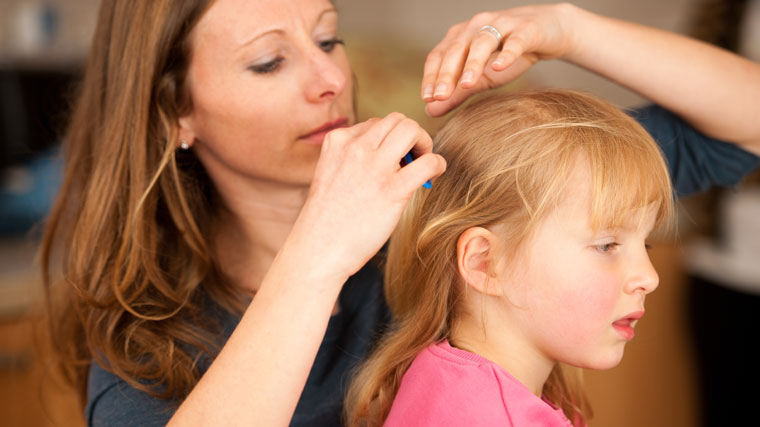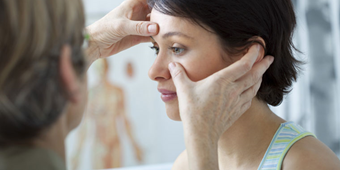Head Lice Can Seem Stressful But Is Usually Easily Treatable

Answer a few questions and we'll provide you with a list of primary care providers that best fit your needs.
Head lice can be something parents worry about and even dread, especially as children enter school.
Head lice are parasitic insects that can be found on people’s heads, eyebrows, and eyelashes, according to the Centers of Disease Control and Prevention (CDC). Head lice live by feeding on human blood.
It is estimated that 6 million to 12 million cases of head lice among children ages 3 to 11 happen every year in the U.S., according to the CDC.They live close to the scalp so they can eat multiple times a day. Though the thought of lice can be unsettling, they are not known to spread diseases, according to the CDC.
And the Food and Drug Administration (FDA) states that head lice cases jump every year in the fall when the new school year starts.
Because lice are parasites, they can sometimes be associated with someone being unclean, but that is not typically the case.
The following symptoms, according to the National Institutes of Health (NIH), are signs that you or your child has head lice:
- Small red bumps on the scalp, neck, or shoulders
- Tiny white specks on the bottom of each hair that are hard to get off. These specks are the eggs, called nits
- Very itchy scalp
- Visible lice crawling in hair
Head lice crawls from place to place and is spread by direct contact, which frequently happens while children play in close contact and have their heads together, according to the CDC.
You can help reduce the risk that you or your child will get lice, according to the CDC, by:
- Avoiding contact between your hair and someone else’s hair
- Not sharing clothes, including hats, scarves, coats, and sports uniforms
- Keeping hair accessories – combs, brushes, pony tail holders, headbands, and more – to yourself
If you do believe you or your child has lice, the NIH recommends starting with an over-the-counter shampoo treatment containing 1 percent permethrin (such as Nix). Prescription strength medication is also available but not usually necessary.
To keep head lice from coming back, it is also important to get rid of the nits.
Use a special nit comb to help remove the eggs that are “glued” to individual strands of hair. You can tell the difference between nits and dandruff because the dandruff will brush off easily and the nits will have to be slid off the full length of the strand of hair with a nit comb between fingernails.
Comb hair for nits again in seven to 10 days, according to the NIH.
It is important to carefully follow the directions on this medicine.
Recently, some head lice have become resistant to treatment, according to the CDC. If your treatment does not kill the lice, your doctor can help you decide if you need a different treatment.
Answer a few questions and we'll provide you with a list of primary care providers that best fit your needs.
Source: Centers for Disease Control and Prevention; Food and Drug Administration; National Institutes of Health




